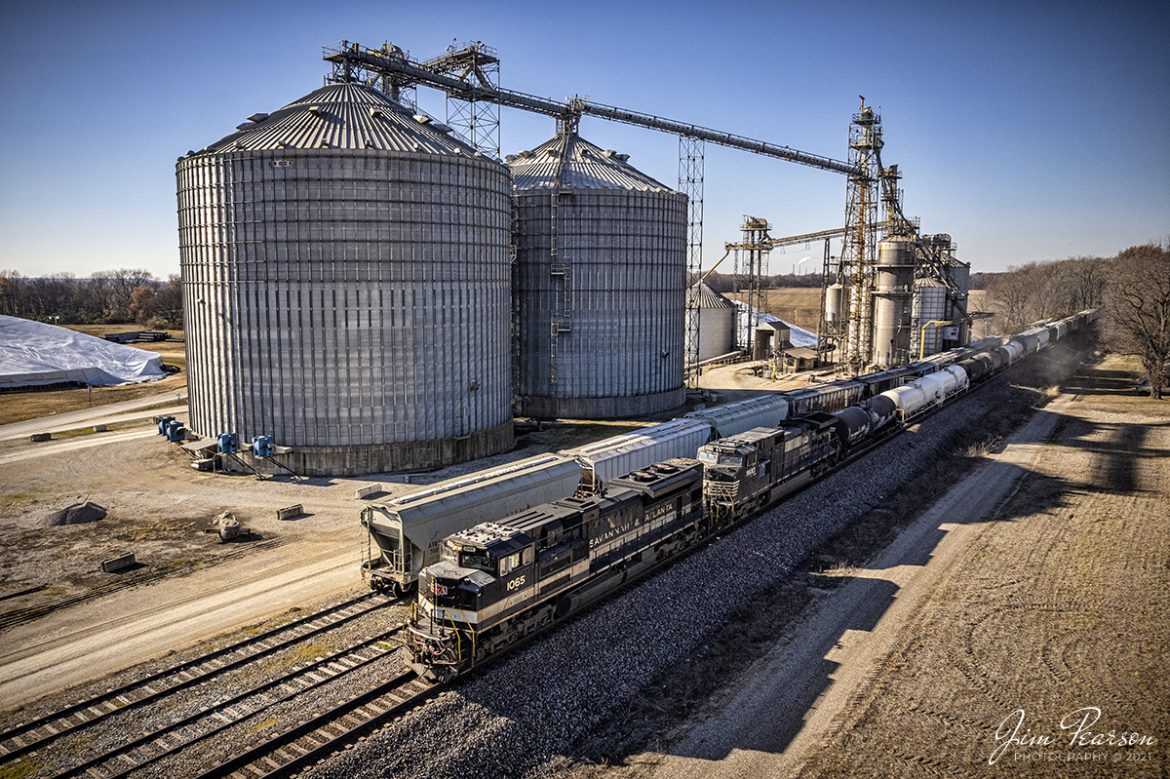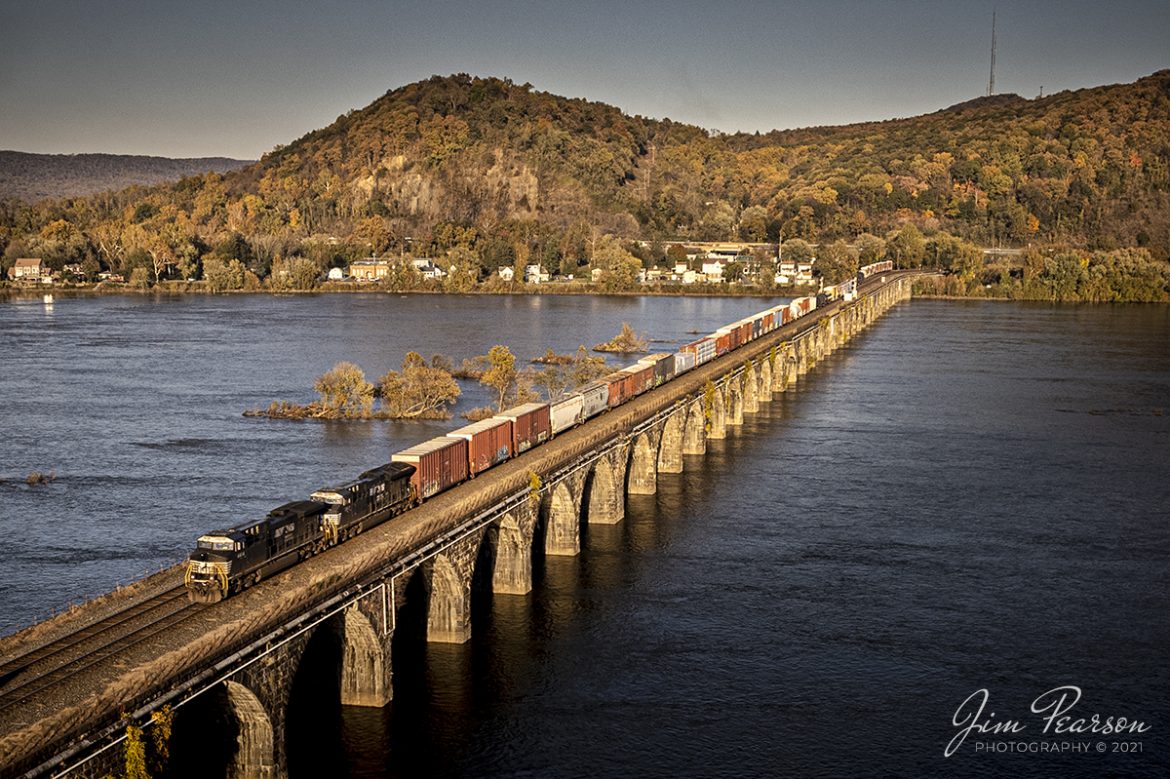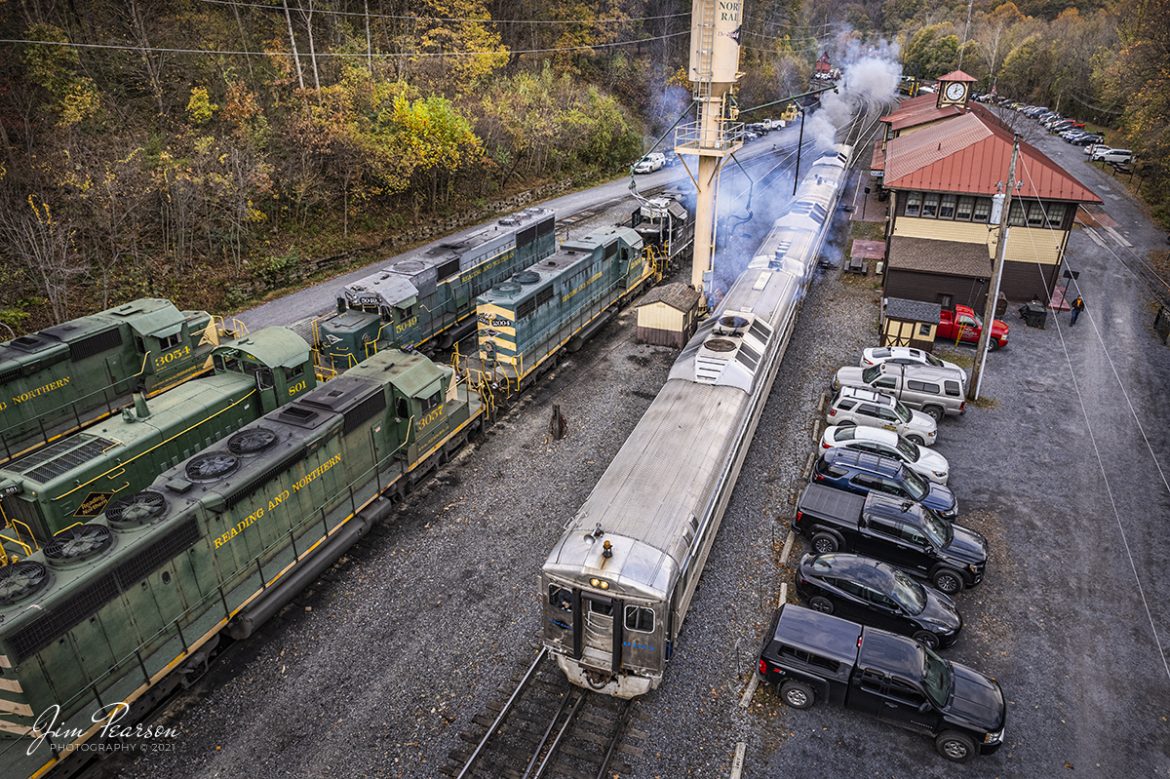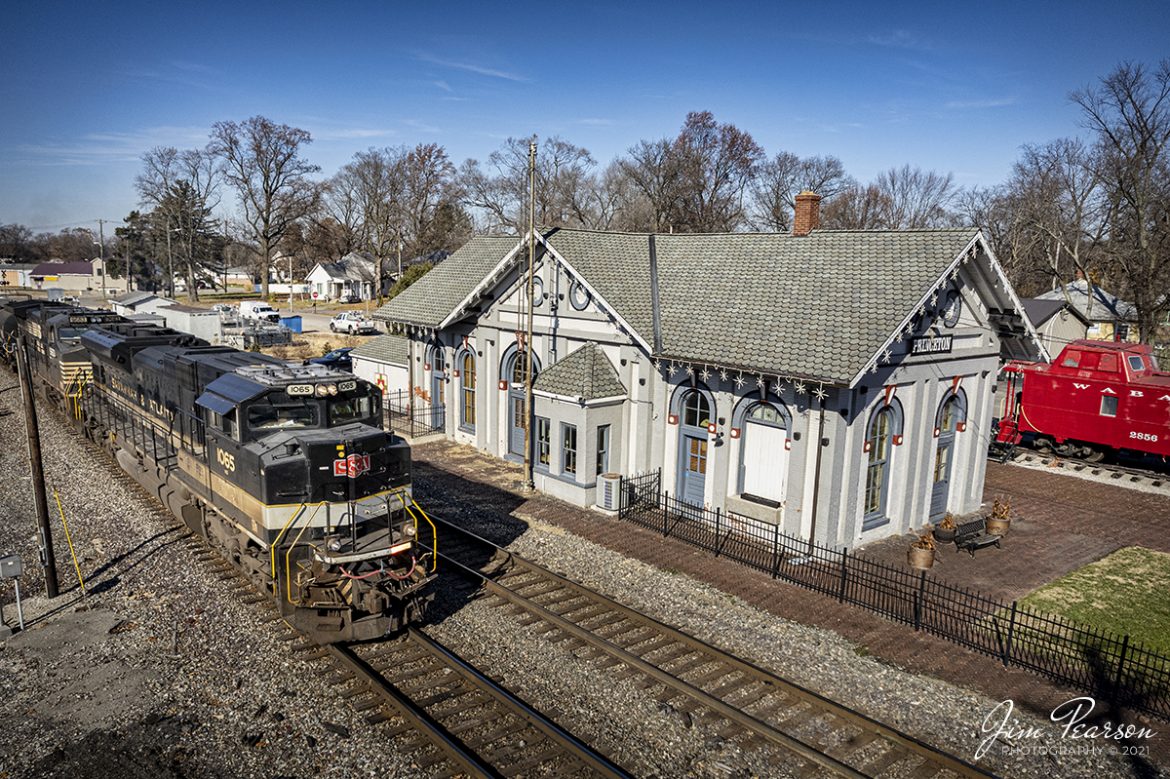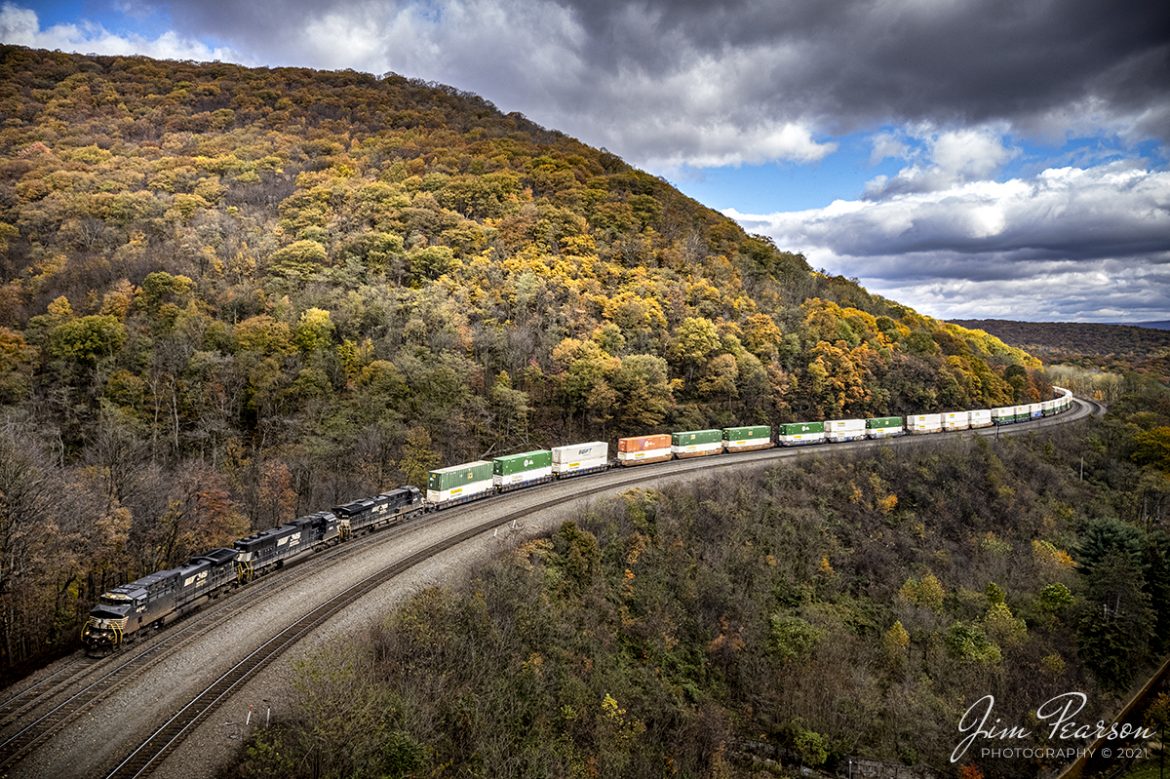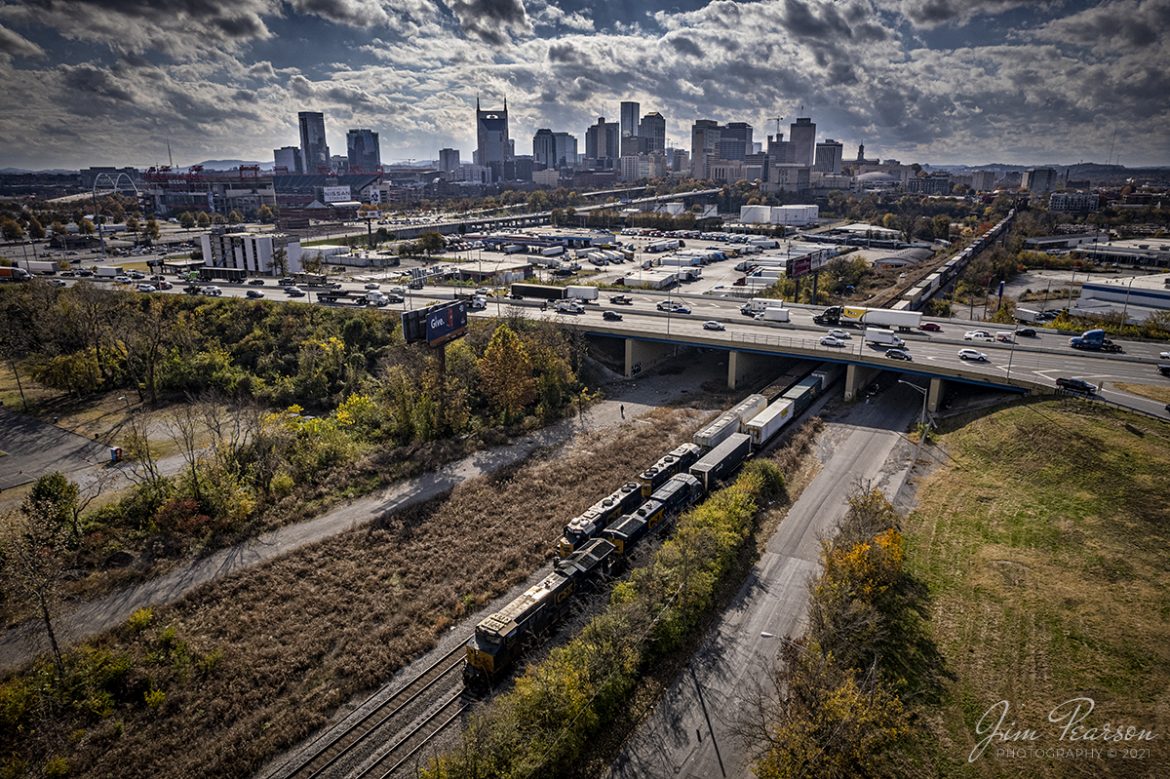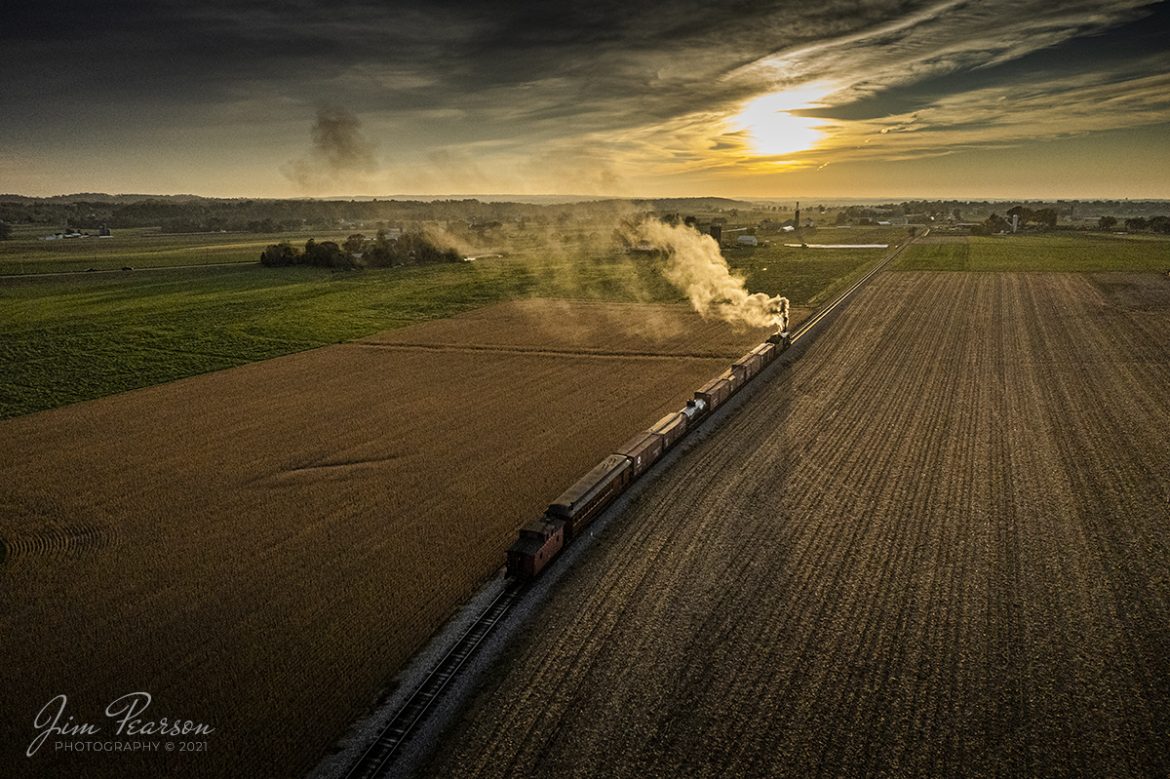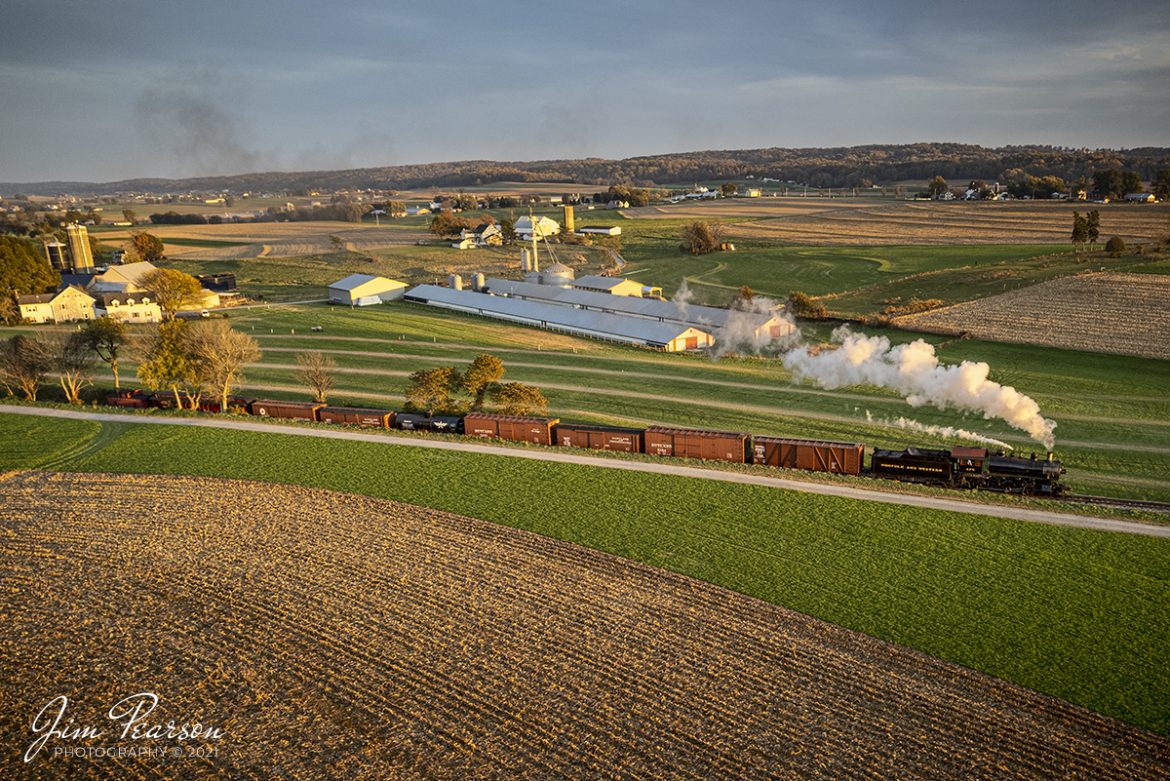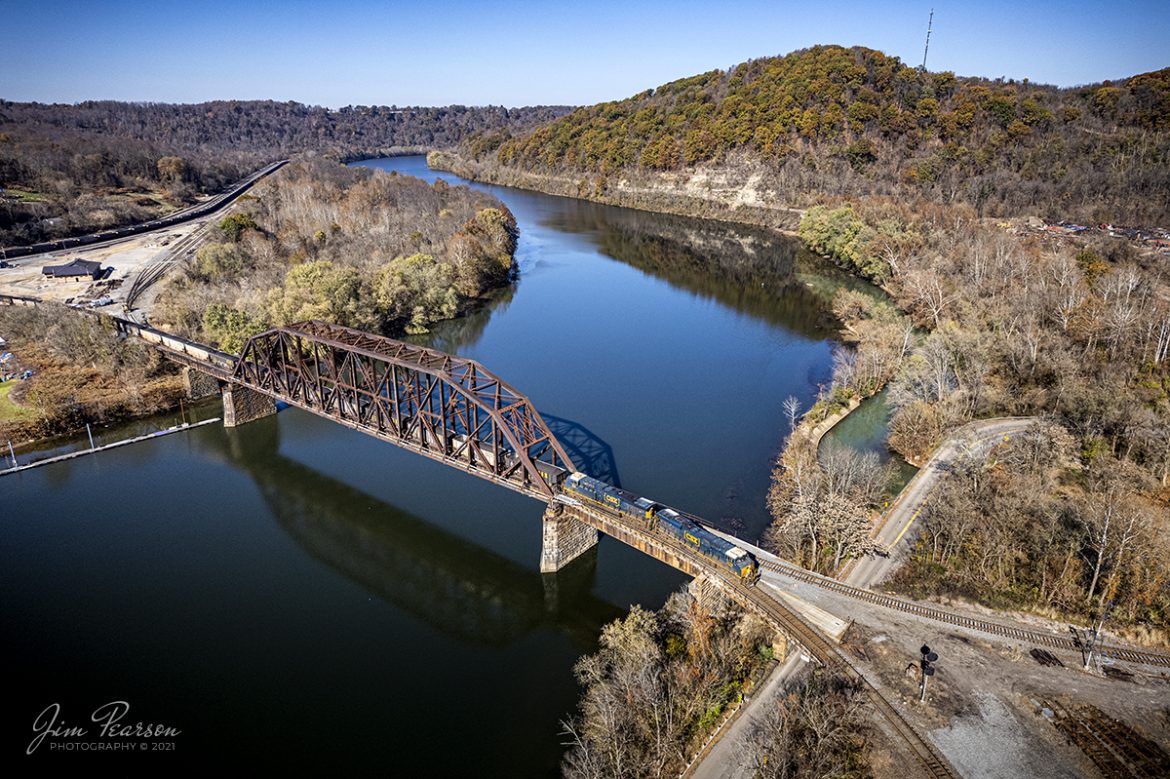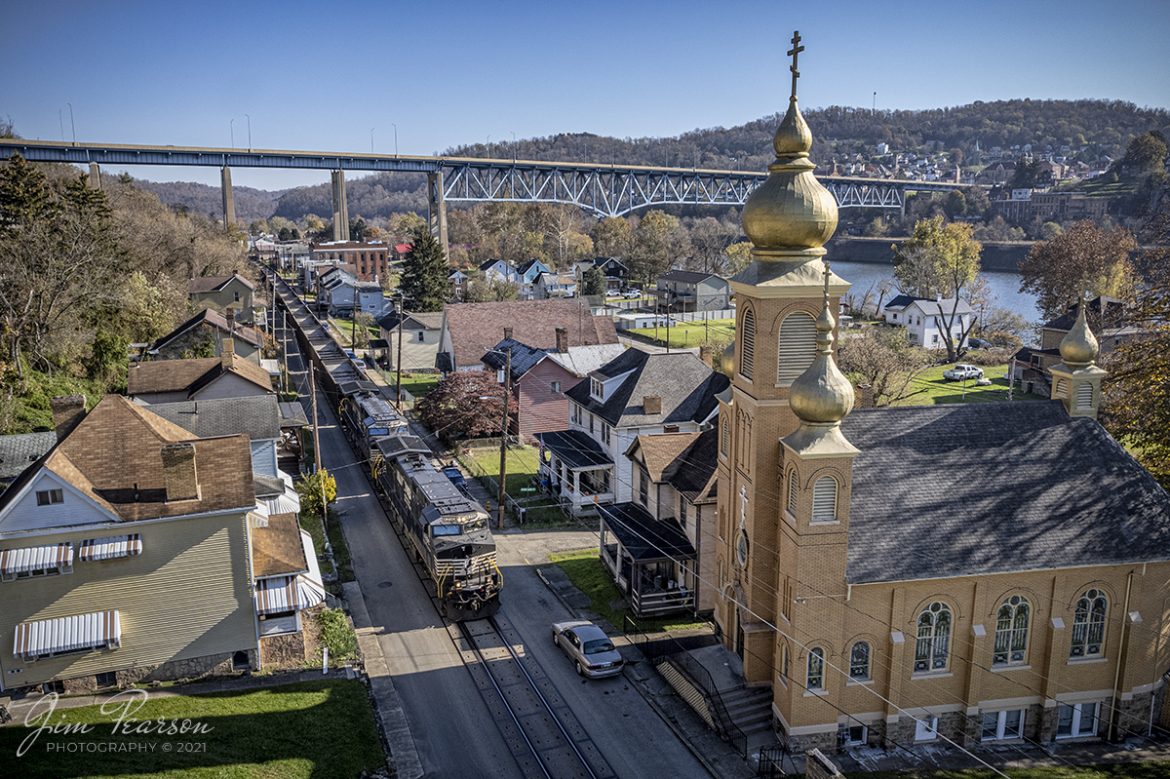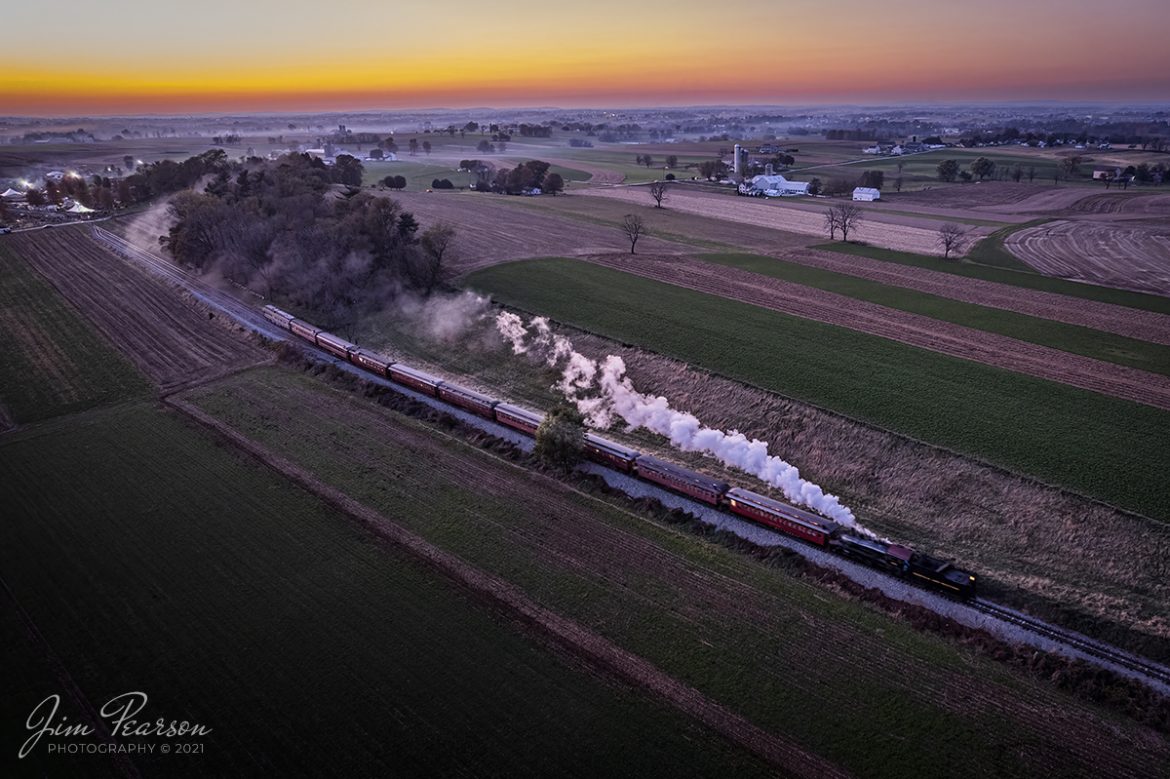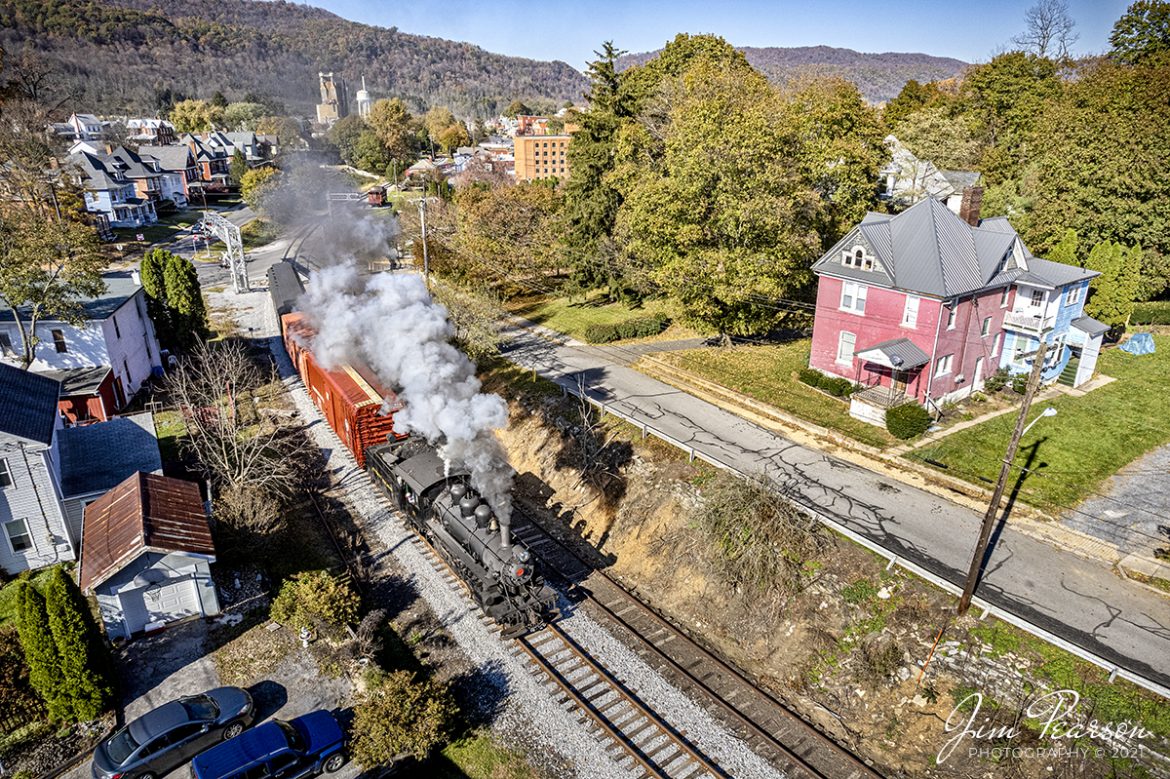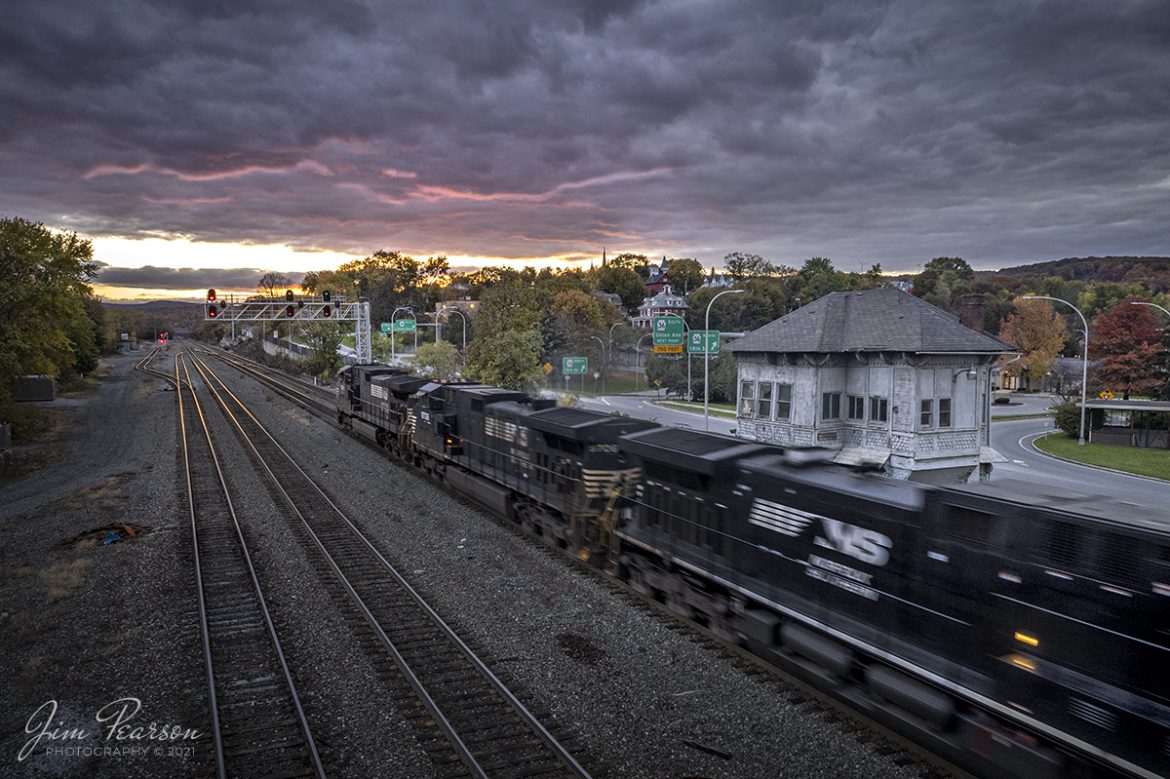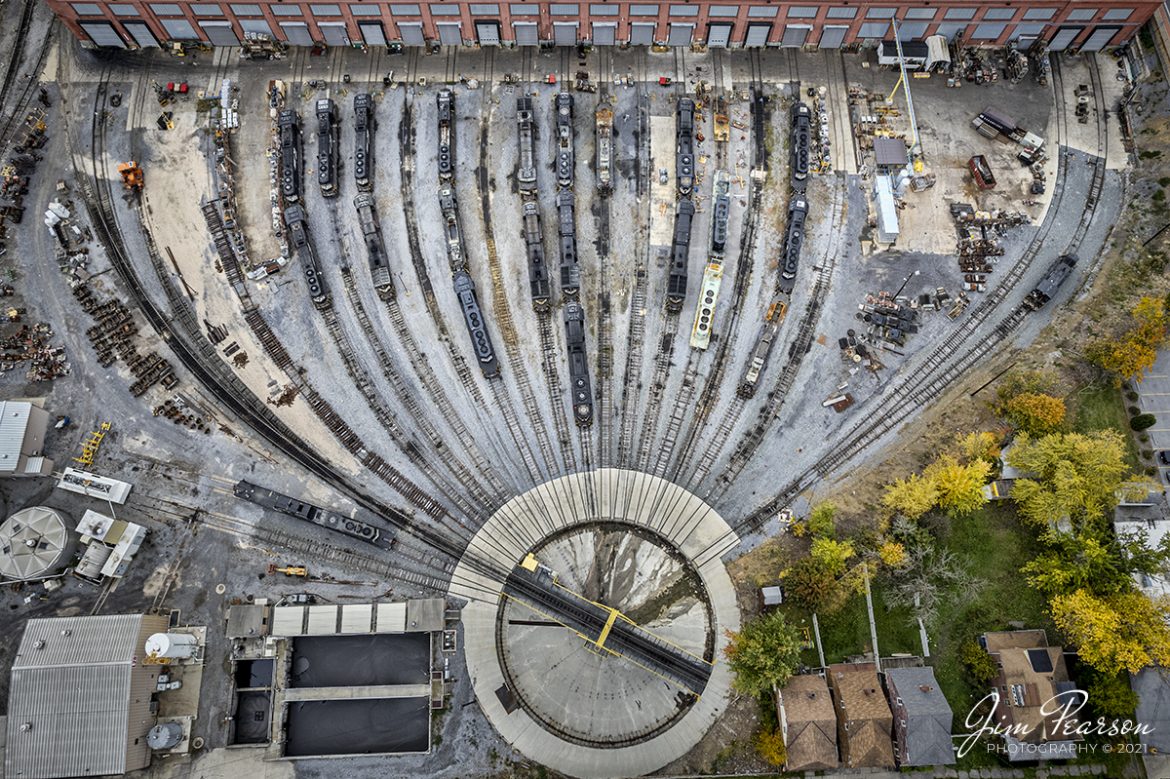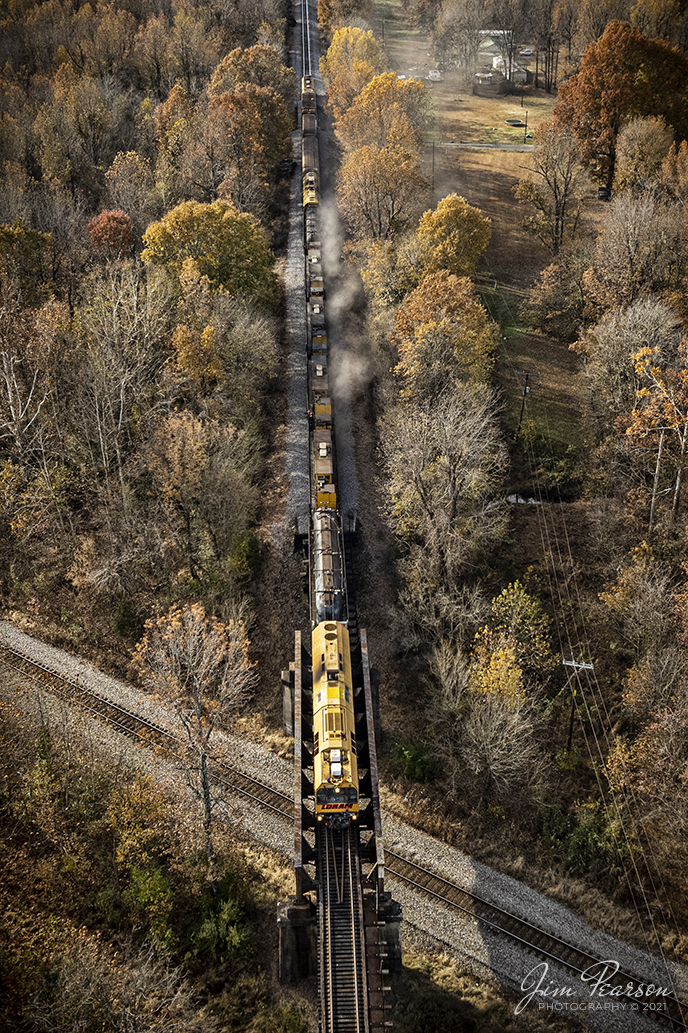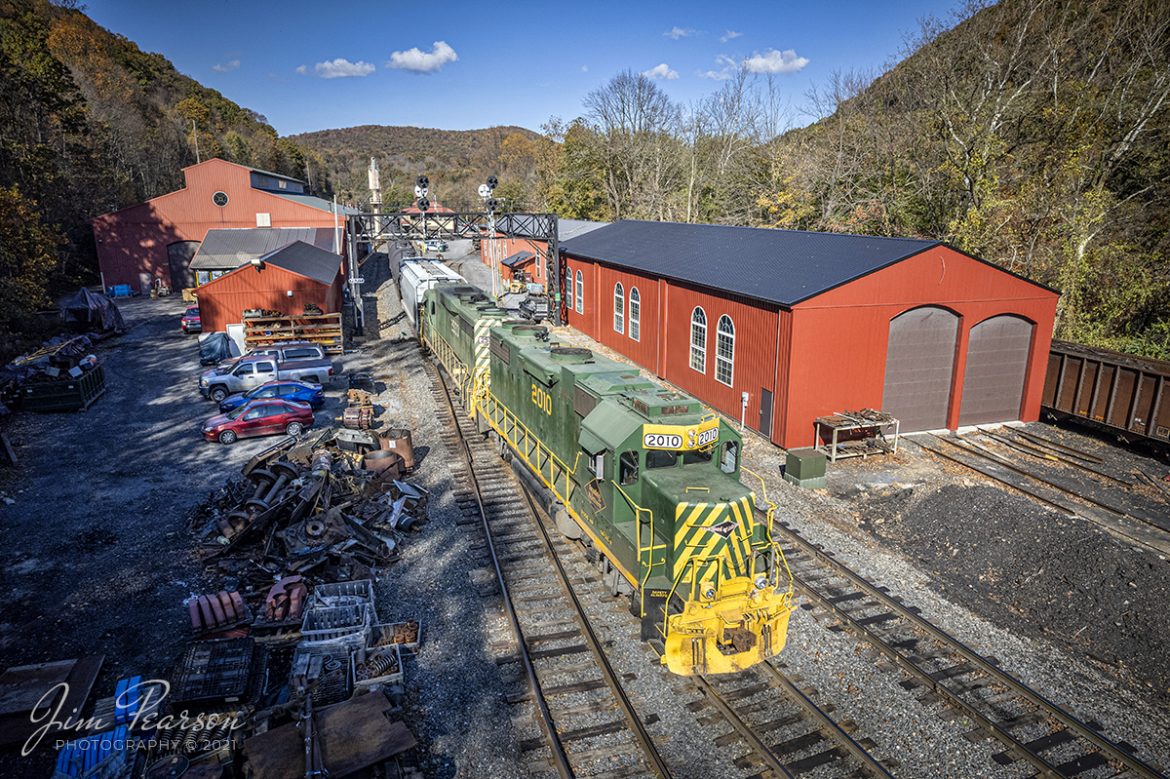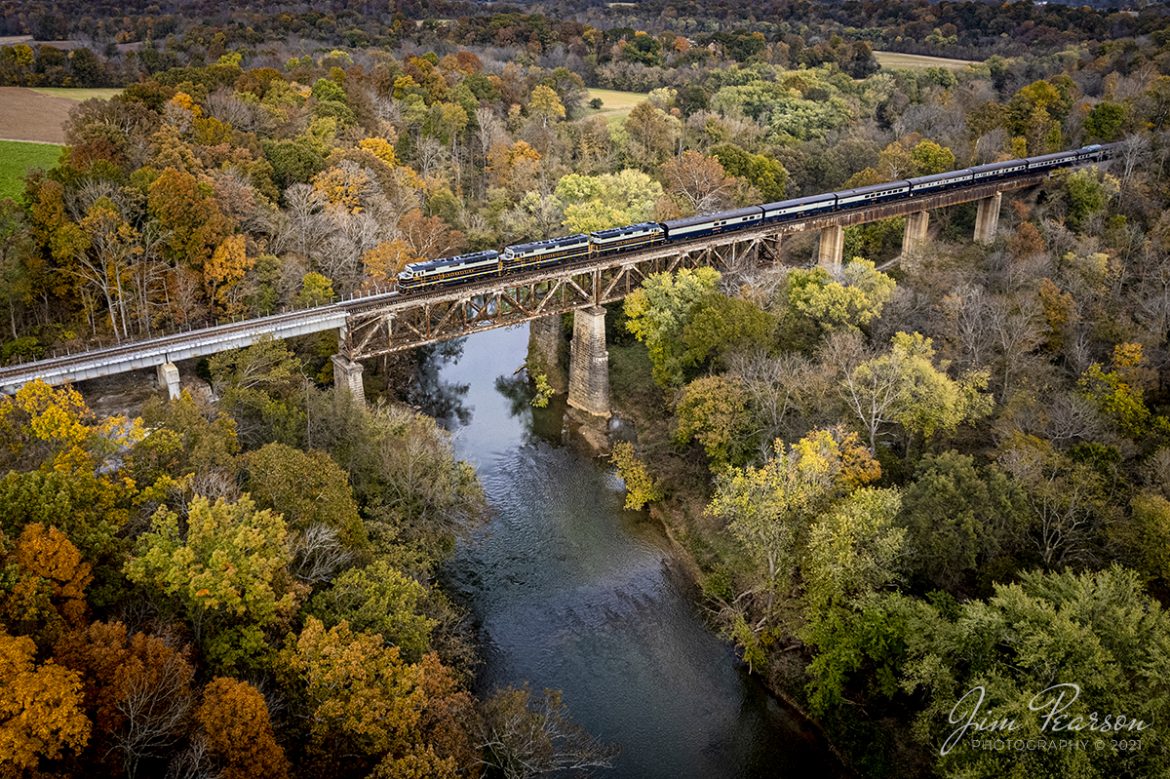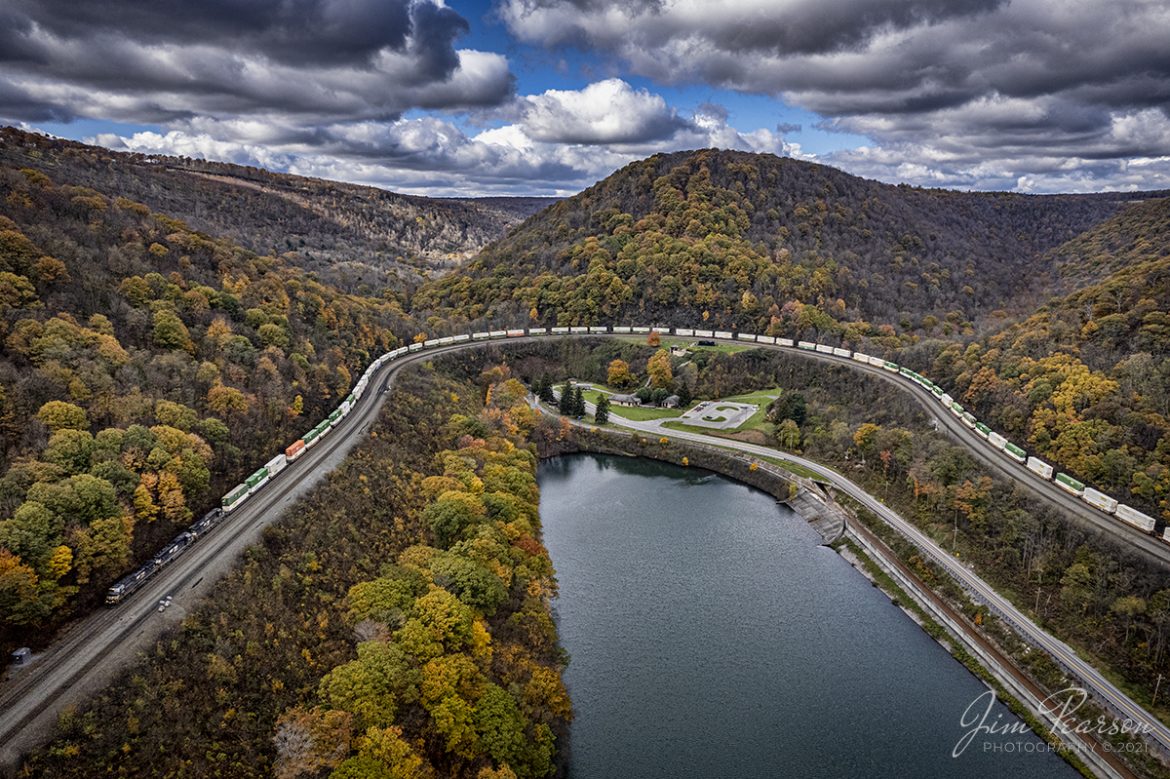Norfolk Southern Savannah & Atlanta Heritage unit 1065 leads NS 167, at Lyles Station, Princeton, IN
Norfolk Southern Savannah and Atlanta Heritage unit 1065 leads NS 167, as it passes Consolidated Grain and Barge Company at Lyles Station, MP 157, as it heads east on the NS Southern West District at Lyles Station, Indiana on December 3rd, 2021. Catching this unit completes my goal of photographing all 20 of the NS Heritage units out in the Wild.
According to the NS Website: Savannah & Atlanta Railway (SR, EMD) began life as the Brinson Railway in 1906, slowly expanding from Savannah toward the Northwest. It was consolidated with other small railroads to become the Savannah & Atlanta in 1917. Central of Georgia bought the S&A in 1951.
According to Wikipedia, Lyles or Lyles Station is an unincorporated community in Patoka Township, Gibson County, Indiana. The community dates from 1849, although its early settlers first arrived in the 1830s, and it was formally named Lyles Station in 1886 to honor Joshua Lyles, a free African American who migrated with his family from Tennessee to Indiana around 1837. Lyles Station is one of Indiana’s early black rural settlements and the only one remaining.
The rural settlement reached its peak in the years between 1880 and 1912, when major structures in the community included the railroad depot, a post office, a lumber mill, two general stores, two churches, and a school. By the turn of the twentieth century,
Lyles Station had fifty-five homes, with a population of more than 800 people. The farming community never fully recovered from the Great Flood of 1913, which destroyed much of the town. Most of its residents left for economic reasons, seeking opportunities for higher paying jobs and additional education in larger cities.
By 1997 approximately fifteen families remained at Lyles Station, nearly all of them descended from the original settlers.
Tech Info: DJI Mavic Air 2S Drone, RAW, 22mm, f/2.8, 1/2500, ISO 130.
Norfolk Southern 4414 leads a freight train westbound across the Rockville Bridge
Norfolk Southern 4414 leads a freight train westbound across the Rockville Bridge over the Susquehanna River at Rockville, Pennsylvania on the NS Pittsburgh line as they head for Enola Yard at Enola, PA on November 5th, 2021.
According to Wikipedia: The Rockville Bridge is the longest stone masonry arch railroad viaduct ever built, with forty-eight 70-foot spans and a total length of 3,820 feet (1,160 m). The bridge crosses the Susquehanna River about 5 miles (8 km) north of Harrisburg, Pennsylvania. The eastern end is in Rockville and the western end is just south of Marysville. Completed in 1902 by the Pennsylvania Railroad, it remains in use today by the Norfolk Southern Railway and Amtrak’s Pennsylvanian route.
The bridge was listed on the National Register of Historic Places in 1975 and was designated as a National Historic Civil Engineering Landmark in 1979.
The first bridge at the site was a one-track wooden truss. It opened on September 1, 1849, when the PRR began operating over it. The Northern Central Railway began to use it after abandoning their Marysville Bridge. It was replaced in 1877 with a double-track iron truss bridge.
The third and current bridge was built between April 1900 and March 1902 by Drake & Stratton Co., which built the eastern half, and H.S. Kerbaugh, working from the west. The laborers were Italian or local.
Control of the bridge passed to Penn Central after the PRR merger in 1968, then to Conrail and finally the Norfolk Southern.
Tech Info: DJI Mavic Air 2S Drone, RAW, 22mm, f/2.8, 1/1000, ISO 100.
Reading Blue Mountain and Northern Railroad Rail Diesel Car 9168 at Port Clinton, PA
Reading Blue Mountain and Northern Railroad Rail Diesel Car 9168 leads as the engineer pulls past the depot at Port Clinton, Pennsylvania on a beautiful fall afternoon on the mountain railroad on November 4th, 2021.
According to their website: The Reading and Northern Railroad owns and operates self-propelled Rail Diesel Cars #9166, #9167, and #9168. The cars were built by the former Budd Company of Philadelphia in the 1950’s for commuter use by various railroads. The Reading and Northern Railroad invested a lot of money on all three cars with many updates including an ornately painted ceiling in all cars.
The #9166 includes functioning windows and a clean restroom. This RDC consists of a coach and a kitchen in which refreshments and snacks are served. Make new friends at the counter area or sit-down area of the refreshment area!
The #9167 is also a complete coach with padded seats that flip, functioning windows, and a clean restroom on board.
The #9168 contains comfortable bus-style seating which maneuver in both directions. This coach also includes functioning windows and a clean restroom.
According to Wikipedia: The Reading Blue Mountain and Northern Railroad, sometimes shortened to Reading and Northern Railroad, is a regional railroad in eastern Pennsylvania. Its headquarters is in Port Clinton. The RBMN provides freight service on 300 miles of track.
Tech Info: DJI Mavic Air 2S Drone, RAW, 22mm, f/2.8, 1/320, ISO 100.
Norfolk Southern railway Savannah & Atlanta 1065 Heritage Unit leads NS 167 at Princeton, IN
Norfolk Southern railway Savannah & Atlanta 1065 Heritage Unit leads NS 167 as it passes the restored depot at Princeton, Indiana, on its way east along the NS East-West District on December 3rd, 2021. This unit completes my goal of photographing all the 20 NS Heritage units!
According to the NS Website: Savannah & Atlanta Railway (SR, EMD) began life as the Brinson Railway in 1906, slowly expanding from Savannah toward the Northwest. It was consolidated with other small railroads to become the Savannah & Atlanta in 1917. Central of Georgia bought the S&A in 1951.
According to the Gibson County website: Constructed in 1875 and beautifully restored, the Princeton Depot is the only remaining depot structure in Gibson County. Once housing the C&EI and L&N railways, it was the lifeline of commerce and transportation for the county. Passenger service was discontinued from the depot in late 1960. Today the depot stands as a nostalgic reminder of the importance railroads have played in Gibson County’s history.
The Princeton Train Depot is now home to the Gibson County Visitors Center and features a railway museum with a restored WABASH train caboose.
Tech Info: DJI Mavic Air 2S Drone, RAW, 22mm, f/2.8, 1/2500, ISO 120.
Norfolk Southern 4041, 1843, and 8016 lead an intermodal through Horseshoe Curve at Altoona, Pennsylvania
Norfolk Southern 4041, 1843, and 8016 lead an intermodal through Horseshoe Curve at Altoona, Pennsylvania as it heads west on the NS Pittsburgh Line on a beautiful fall afternoon, on September 3rd, 2021.
According to Wikipedia: Horseshoe Curve is a three-track (though originally four) railroad curve on Norfolk Southern Railway’s Pittsburgh Line in Blair County, Pennsylvania. The curve itself is about 2,375 feet long and 1,300 feet in diameter; it was completed in 1854 by the Pennsylvania Railroad as a way to lessen the grade to the summit of the Allegheny Mountains. It eventually replaced the time-consuming Allegheny Portage Railroad, the only other route across the mountains for large vehicles. Because of the Allegheny Mountains geoform, in and around Altoona – and almost perfectly at “The Curve” – westbound traffic goes south and eastbound traffic goes north. So, in terms of final destination, the southern side of “The Curve” is where trains leave to go west, and vice versa.
The rail line has been important since its opening, and during World War II the Curve was targeted by Nazi Germany in 1942 as part of Operation Pastorius. The Curve was later owned and used by Pennsylvania Railroad successors Penn Central, Conrail, and Norfolk Southern. Horseshoe Curve was added to the National Register of Historic Places and designated a National Historic Landmark in 1966, and it became a National Historic Civil Engineering Landmark in 2004.
Horseshoe Curve has long been a tourist attraction; a trackside observation park was completed in 1879. The Park was renovated, and a visitor center built in the early 1990s. The Railroaders Memorial Museum in Altoona manages the center, which has exhibits pertaining to the curve.
Tech Info: DJI Mavic Air 2S Drone, RAW, 22mm, f/2.8, 1/725, ISO 100.
CSX Q026 as it passes under I-24 headed north from Nashville, Tennessee
CSXT 3406 leads CSX Q026 as it passes under I-24 and a local job waiting in the siding for him to clear, as Q026 departs downtown Nashville, Tennessee on the Terminal Subdivision heading north on November 17th, 2021, headed to Bedford Park, IL.
Tech Info: DJI Mavic Air 2S Drone, RAW, 22mm, f/2.8, 1/4000, ISO 100.
#trainphotography #railroadphotography #trains #railways #dronephotography #trainphotographer #railroadphotographer #jimpearsonphotography
Strasburg Railroad Norfolk & Western heads into the sunset at Strasburg, PA
Strasburg Railroad caboose #12 brings up the rear of a mixed freight as steam locomotive Norfolk & Western 475 leads their train west into the setting sun at Strasburg, Pennsylvania on November 7th, 2021.
According to Wikipedia: Strasburg Railroad (Norfolk and Western) No. 475 is a 4-8-0 “Mastodon” type steam locomotive owned and operated by the Strasburg Railroad outside of Strasburg, Pennsylvania. Built by the Baldwin Locomotive Works in June 1906, it was part of the Norfolk and Western’s first order of M class numbered 375-499. Today, No. 475 is the only operating 4-8-0 type in North America and the Strasburg Rail Road’s oldest operating steam locomotive.
Tech Info: DJI Mavic Air 2S Drone, RAW, 22mm, f/2.8, 1/8000, ISO 400.
Norfolk and Western 4-8-0 steam locomotive west to Strasburg, PA
Norfolk and Western 4-8-0 steam locomotive 475 pulls a freight train as it makes its way west through the Amish countryside into the setting sun, on the Strasburg Railroad at Strasburg, Pennsylvania on November 7th, 2021.
According to Wikipedia: Strasburg Railroad (Norfolk and Western) No. 475 is a 4-8-0 “Mastodon” type steam locomotive owned and operated by the Strasburg Railroad outside of Strasburg, Pennsylvania. Built by the Baldwin Locomotive Works in June 1906, it was part of the Norfolk and Western’s first order of M class numbered 375-499. Today, No. 475 is the only operating 4-8-0 type in North America and the Strasburg Rail Road’s oldest operating steam locomotive.
Tech Info: DJI Mavic Air 2S Drone, RAW, 22mm, f/2.8, 1/180, ISO 120.
A CSX loaded coal train crosses the Monongahela River at Brownsville, PA
The conductor on a CSX loaded coal train stands on the nose of CSXT 3176 as his train crosses the Monongahela River at Brownsville, Pennsylvania. They are headed off the NS Mon Line where the conductor will throw the switch onto the NS Loveridge Secondary for their continued movement southbound.
Tech Info: DJI Mavic Air 2S Drone, RAW, 22mm, f/2.8, 1/2000, ISO 120.
Norfolk Southern 4290 leads an empty coal train street running at Brownsville, PA
Norfolk Southern 4290 leads an empty coal train north down Main Street past the Holy Resurrection Orthodox Church at Brownsville, Pennsylvania on the NS Mon line. I never knew there was street running in this area until fellow railfan Ben Sutton put me onto this spot! Came away from here with several shots that I love and will be posting over the next weeks! Thanks Ben!
According to Wikipedia: The Mon Line is an 85-mile-long Norfolk Southern rail line which runs along the Monongahela River for most of its route.
The predecessor of this line is the Pittsburgh, Virginia and Charleston Railroad. The northern portion (Pittsburgh to West Brownsville) of the line is the former main line of the Monongahela Division of the Pennsylvania Railroad, and the southern portion (West Brownsville to Waynesburg) was once part of the Monongahela Railway’s Waynesburg Southern Branch.
Its northern terminus was formerly at the junction with the Panhandle Route at the Panhandle Bridge in Pittsburgh, and its southern terminus was near Brownsville, Pennsylvania where it had a connection to the Monongahela Railway.
Conrail transferred the West Brownsville to Waynesburg trackage from the Waynesburg Southern Branch to the former main line of the PRR Monongahela Division and it became the new Mon Line.
Tech Info: DJI Mavic Air 2S Drone, RAW, 22mm, f/2.8, 1/1250, ISO 110.
The last passenger train of the day departs eastbound at dusk from Strasburg, PA
The last passenger train of the day departs eastbound at dusk after, pulling in reverse out of the depot at the Strasburg Railroad the last light of the day begins to fade. The cold November air produces a spectacular show of steam trailing along the train on November 6th, 2021, at Strasburg, Pennsylvania. Once they reach their turn around point down the line, they will reverse the locomotive at Leaman Place Junction in Paradise, PA, by running around the train and then make a normal pull back to the station.
According to Wikipedia: Strasburg Railroad (Norfolk and Western) No. 475 is a 4-8-0 “Mastodon” type steam locomotive owned and operated by the Strasburg Railroad outside of Strasburg, Pennsylvania. Built by the Baldwin Locomotive Works in June 1906, it was part of the Norfolk and Western’s first order of M class numbered 375-499. Today, No. 475 is the only operating 4-8-0 type in North America and the Strasburg Rail Road’s oldest operating steam locomotive.
Tech Info: DJI Mavic Air 2S Drone, RAW, 22mm, f/2.8, 1/15 sec, ISO 200.
Everett Railroad #11 pulls out of downtown Roaring Spring, Pennsylvania
Everett Railroad #11 pulls out of downtown Roaring Spring, Pennsylvania, from their depot, as it heads off on the next leg of a Historic Transport Preservation, Inc, Steam Special on November 6th, 2021.
According to their website: Steam locomotive number 11 was constructed in 1920 by the Cooke Works of the American Locomotive Company (Alco) in Paterson, New Jersey. It is a “2‑6‑0” or “Mogul” type and was one of 54 engines of four different wheel arrangements built between 1920 and 1925 intended for export to Cuba and use in that country’s sugar cane fields.
Tech Info: Nikon D800, RAW, Sigma 24-70 @ 24mm, f/2.8, 1/2000, ISO 140.
Norfolk Southern 9629 leads an intermodal train west past Alto Tower, Altoona, PA
Norfolk Southern 9629 leads an intermodal train as they chase the sun west past the Alto Tower next to the 17th Street overpass at Altoona, Pennsylvania as they head west on the Norfolk Southern Pittsburgh Line on November 3rd, 2021.
Alto tower went vacant for the first time in over 97 years back on June 16th, 2012 when signal crews shifted the authority from the Alto control operator to a NS train dispatcher, according to a NEWSWIRE report by TRAINS Magazine.
Tech Info: DJI Mavic Air 2S Drone, RAW, 22mm, f/2.8, 1/40, ISO 110.
Norfolk Southern Juniata Locomotive Shops in downtown Altoona, Pennsylvania
Locomotives galore sit outside the Norfolk Southern Juniata Locomotive Shops in downtown Altoona, Pennsylvania in this birds-eye view on November 3rd, 2021. The shops are just part of the large complex called Altoona Works, or Altoona Terminal.
According to Wikipedia: Altoona Works (also known as Altoona Terminal) is a large railroad industrial complex in Altoona, Pennsylvania. It was built between 1850 and 1925 by the Pennsylvania Railroad (PRR) to supply the railroad with locomotives, railroad cars and related equipment. For many years it was the largest railroad shop complex in the world.
From the NS Website: At our Juniata locomotive shop in Altoona, Pennsylvania, Norfolk Southern regularly recycles locomotives into more efficient machines, benefiting both customers and the environment. We can strip a locomotive down to the bare frame and completely rebuild it, including the engine, alternator, wiring, cab, trucks, combos and running gearall in 6.5 days.
NS also operates our own indoor locomotive emissions-testing facility, unique among railroads, which allows us to test locomotives year-round to increase fuel efficiency and meet EPA regulations.
Tech Info: DJI Mavic Air 2S Drone, RAW, 22mm, f/2.8, 1/120, ISO 120.
LORAM Railgrinder 401 grinds its way north on the Paducah and Louisville Railway at Madisonville, KY
LORAM Railgrinder 401 grinds its way north on the Paducah and Louisville Railway on a beautiful fall afternoon as it crosses over the CSX Henderson Subdivision at Arklow in Madisonville, Kentucky on November 15th, 2021.
According to Wikipedia: A railgrinder (or rail grinder) is a maintenance of way vehicle or train used to restore the profile and remove irregularities from worn tracks to extend its life and to improve the ride of trains using the track. Rail grinders were developed to increase the lifespan of the tracks being serviced for rail corrugation. Rail grinding is a process that is done to stop the deformation due to use and friction on railroad tracks by removing deformations and corrosion. Railroad tracks that experience continual use are more likely to experience corrugation and overall wear.
Rail grinders are used to grind the tracks when rail corrugation is present, or before corrugation begins to form on the tracks. Major freight train tracks use rail grinders for track maintenance based on the interval of tonnage, rather than time. Transit systems and subways in major cities continue to use scheduled rail grinding processes to combat the corrugation common to heavily used tracks. Rail-grinding equipment may be mounted on a single self-propelled vehicle or on a dedicated rail-grinding train which, when used on an extensive network, may include crew quarters. The grinding wheels, of which there may be more than 100, are set at controlled angles to restore the track to its correct profile.
Tech Info: DJI Mavic Air 2S Drone, RAW, 22mm, f/2.8, 1/500, ISO 100.
Reading & Northern 2010 heads up a freight train southbound at Port Clinton, PA
Reading & Northern 2010 heads up a freight train as it passes under the signal bridge at Pulpit, on its way south out of their yard at Port Clinton, Pennsylvania, bound for Redding, PA on November 5th, 2021.
This location must be one of the most railfan friendly rail operations I’ve encountered in a long time! Our first day here we met up with fellow railfan Ryan Bruno who railfans the area a lot and he gave us the tour and told us all we had to do is stop at the yard office, sign in and they’d give us a pass to shoot in the yard, while keeping all normal safety practices in mind! We had a great time! This photo was taken on our second day chasing the Reading Blue Mountain & Northern Railroad, after returning for the early morning sun. It was worth it!
They run a passenger service with Steam, but we arrived a week too late to photograph their steam operations.
According to Wikipedia: The Reading Blue Mountain and Northern Railroad (reporting mark RBMN), sometimes shortened to Reading and Northern Railroad, is a regional railroad in eastern Pennsylvania. Its headquarters is in Port Clinton. The RBMN provides freight service on 300 miles (480 km) of track. Its mainline consists of the Reading Division between Reading and Packerton and the Lehigh Division between Lehighton and Dupont. Its main freight cargo is anthracite coal.
Passenger excursions also run on RBMN tracks. The RBMN itself operates excursion service from Reading and Port Clinton to Jim Thorpe, while the Lehigh Gorge Scenic Railway (LGSR) offers service between Jim Thorpe and Lehigh Gorge State Park.
Tech Info: DJI Mavic Air 2S Drone, RAW, 22mm, f/2.8, 1/2000, ISO 100.
Norfolk and Western 475 passes a group of Amish boys and cows at Paradise, PA
Norfolk and Western 475 passes a group of Amish boys and cows, as they make their way west though a farm crossing, at the location known as Carpenters/Beilers, on the Strasburg Railroad at Paradise, Pennsylvania on November 7th, 2021.
According to Wikipedia: Strasburg Railroad (Norfolk and Western) No. 475 is a 4-8-0 “Mastodon” type steam locomotive owned and operated by the Strasburg Railroad outside of Strasburg, Pennsylvania. Built by the Baldwin Locomotive Works in June 1906, it was part of the Norfolk and Western’s first order of M class numbered 375-499. Today, No. 475 is the only operating 4-8-0 type in North America and the Strasburg Rail Road’s oldest operating steam locomotive.
Tech Info: DJI Mavic Air 2S Drone, RAW, 22mm, f/2.8, 1/6000, ISO 400.
CSX P001-18 OCS Business Train heads north at Red River Bridge, Adams, TN
CSXT 1, 2 and 3 (three former Amtrak F40PHs) head across the Red River Bridge at Adams, Tennessee, on a beautiful fall afternoon, as they lead CSX P001-18 Office Car Special passenger train north on the Henderson Subdivision on November 9th, 2021.
The train was carrying VIPs from CSX Transportation, who were on an inspection tour of some of their lines and the facilities along them.
Tech Info: DJI Mavic Air 2S Drone, RAW, 22mm, f/2.8, 1/640, ISO 110.
Norfolk Southern 4041 leads an intermodal through Horseshoe Curve at Altoona, Pennsylvania
Norfolk Southern 4041 leads an intermodal through Horseshoe Curve at Altoona, Pennsylvania as it heads west on the NS Pittsburgh Line on a beautiful fall afternoon, on November 3rd, 2021.
According to Wikipedia: Horseshoe Curve is a three-track (though originally four) railroad curve on Norfolk Southern Railway’s Pittsburgh Line in Blair County, Pennsylvania. The curve itself is about 2,375 feet long and 1,300 feet in diameter; it was completed in 1854 by the Pennsylvania Railroad as a way to lessen the grade to the summit of the Allegheny Mountains. It eventually replaced the time-consuming Allegheny Portage Railroad, the only other route across the mountains for large vehicles. Because of the Allegheny Mountains geoform, in and around Altoona – and almost perfectly at “The Curve” – westbound traffic goes south and eastbound traffic goes north. So, in terms of final destination, the southern side of “The Curve” is where trains leave to go west, and vice versa.
The rail line has been important since its opening, and during World War II the Curve was targeted by Nazi Germany in 1942 as part of Operation Pastorius. The Curve was later owned and used by Pennsylvania Railroad successors Penn Central, Conrail, and Norfolk Southern. Horseshoe Curve was added to the National Register of Historic Places and designated a National Historic Landmark in 1966, and it became a National Historic Civil Engineering Landmark in 2004.
Horseshoe Curve has long been a tourist attraction; a trackside observation park was completed in 1879. The Park was renovated and a visitor center built in the early 1990s. The Railroaders Memorial Museum in Altoona manages the center, which has exhibits pertaining to the curve.
Tech Info: DJI Mavic Air 2S Drone, RAW, 22mm, f/2.8, 1/500, ISO 100 -1 stop.
The Conductor on Norfolk and Western 475 watches the countryside roll-by at Strasburg, PA
The Conductor on Norfolk and Western 475 watches the countryside roll-by as they depart with the last passenger train of the day, eastbound at dusk after, pulling in reverse out of the depot at the Strasburg Railroad the last light of the day barley illuminates the train and steam. The cold November air produces a spectacular show of steam trailing along the train on November 7th, 2021 at Strasburg, Pennsylvania. Once they reach their turn around point down the line they will reverse the locomotive by running around the train and head back to the station.
According to Wikipedia: Strasburg Railroad (Norfolk and Western) No. 475 is a 4-8-0 “Mastodon” type steam locomotive owned and operated by the Strasburg Railroad outside of Strasburg, Pennsylvania. Built by the Baldwin Locomotive Works in June 1906, it was part of the Norfolk and Western’s first order of M class numbered 375-499. Today, No. 475 is the only operating 4-8-0 type in North America and the Strasburg Rail Road’s oldest operating steam locomotive.
Tech Info: DJI Mavic Air 2S Drone, RAW, 22mm, f/2.8, 2.5 sec, ISO 400.

